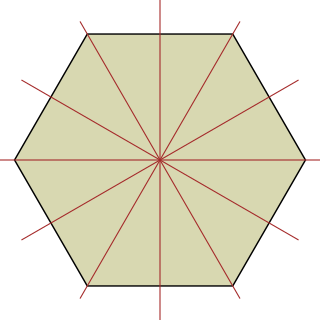 W
WRepresentation theory is a branch of mathematics that studies abstract algebraic structures by representing their elements as linear transformations of vector spaces, and studies modules over these abstract algebraic structures. In essence, a representation makes an abstract algebraic object more concrete by describing its elements by matrices and their algebraic operations. The theory of matrices and linear operators is well-understood, so representations of more abstract objects in terms of familiar linear algebra objects helps glean properties and sometimes simplify calculations on more abstract theories.
 W
WIn mathematics, Borel–de Siebenthal theory describes the closed connected subgroups of a compact Lie group that have maximal rank, i.e. contain a maximal torus. It is named after the Swiss mathematicians Armand Borel and Jean de Siebenthal who developed the theory in 1949. Each such subgroup is the identity component of the centralizer of its center. They can be described recursively in terms of the associated root system of the group. The subgroups for which the corresponding homogeneous space has an invariant complex structure correspond to parabolic subgroups in the complexification of the compact Lie group, a reductive algebraic group.
 W
WIn mathematics, the complexification or universal complexification of a real Lie group is given by a continuous homomorphism of the group into a complex Lie group with the universal property that every continuous homomorphism of the original group into another complex Lie group extends compatibly to a complex analytic homomorphism between the complex Lie groups. The complexification, which always exists, is unique up to unique isomorphism. Its Lie algebra is a quotient of the complexification of the Lie algebra of the original group. They are isomorphic if the original group has a quotient by a discrete normal subgroup which is linear.
 W
WIn the mathematical field of representation theory, group representations describe abstract groups in terms of bijective linear transformations of vector spaces; in particular, they can be used to represent group elements as invertible matrices so that the group operation can be represented by matrix multiplication. Representations of groups are important because they allow many group-theoretic problems to be reduced to problems in linear algebra, which is well understood. They are also important in physics because, for example, they describe how the symmetry group of a physical system affects the solutions of equations describing that system.
 W
WIn mathematics, specifically in the representation theory of groups and algebras, an irreducible representation or irrep of an algebraic structure is a nonzero representation that has no proper nontrivial subrepresentation , with closed under the action of .
 W
WIn mathematics, the McKay graph of a finite-dimensional representation V of a finite group G is a weighted quiver encoding the structure of the representation theory of G. Each node represents an irreducible representation of G. If are irreducible representations of G, then there is an arrow from to if and only if is a constituent of the tensor product . Then the weight nij of the arrow is the number of times this constituent appears in . For finite subgroups H of GL(2, C), the McKay graph of H is the McKay graph of the canonical representation of H.
 W
WZoghman Mebkhout is a French-Algerian mathematician. He is known for his work in algebraic analysis, geometry and representation theory, more precisely on the theory of D-modules.
 W
WIn group theory, a branch of mathematics, an opposite group is a way to construct a group from another group that allows one to define right action as a special case of left action.
 W
WIn mathematics, Young's lattice is a partially ordered set and a lattice that is formed by all integer partitions. It is named after Alfred Young, who, in a series of papers On quantitative substitutional analysis, developed representation theory of the symmetric group. In Young's theory, the objects now called Young diagrams and the partial order on them played a key, even decisive, role. Young's lattice prominently figures in algebraic combinatorics, forming the simplest example of a differential poset in the sense of Stanley (1988). It is also closely connected with the crystal bases for affine Lie algebras.